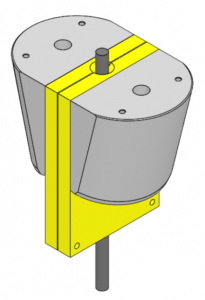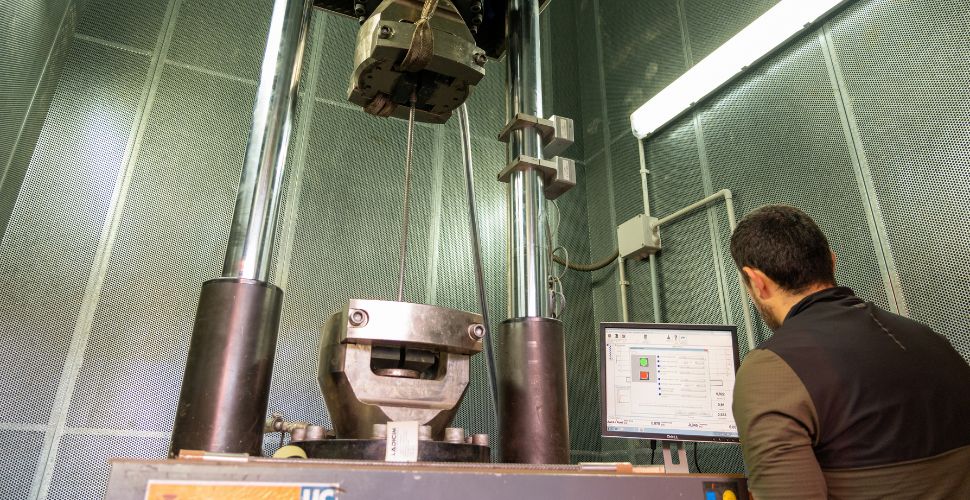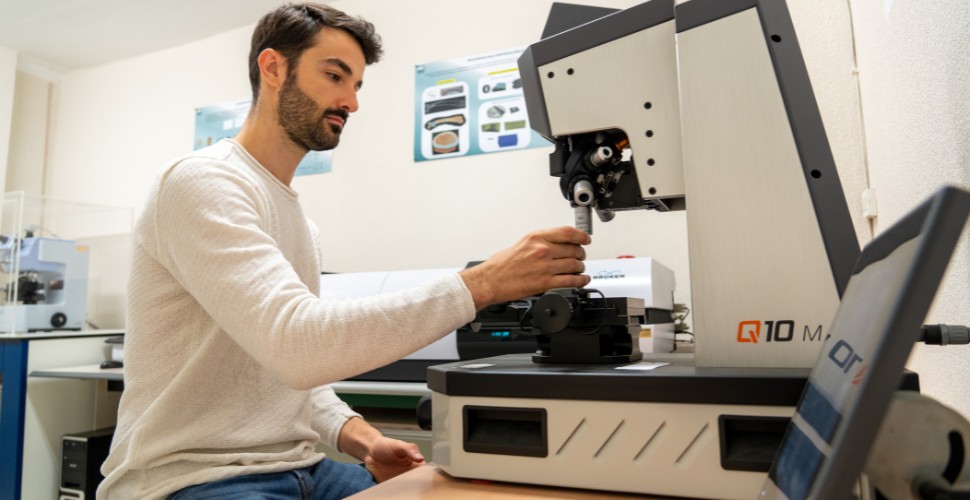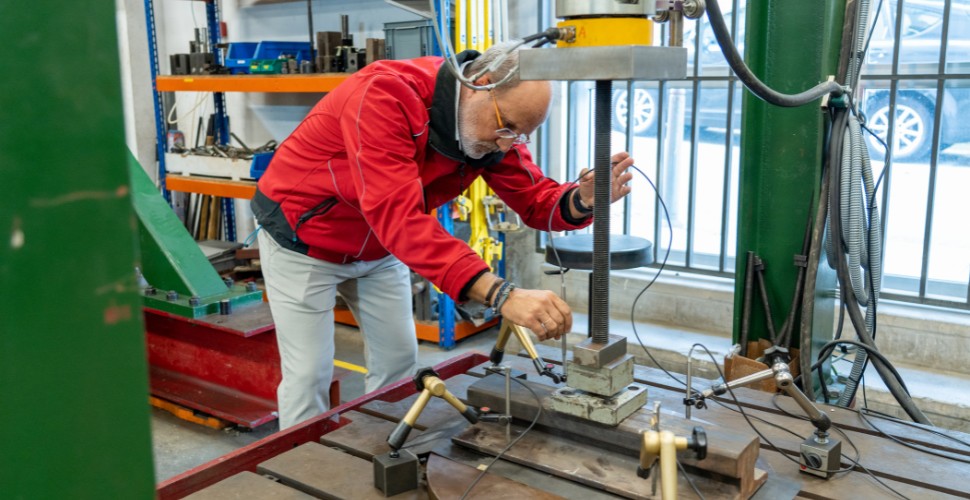LADICIM and GSW patent a clamping system to prevent specimen breakage in tensile tests on metallic materials
The Laboratory of the University of Cantabria and the company specialised in wire rod production have designed an adaptor for grips that considerably reduces the pressures that these devices withstand in this type of quality control tests
LADICIM researchers have patented, in collaboration with engineers from Global Steel Wire (GSW), a novel solution to prevent specimen breakage in tensile-compression tests on metallic materials. This is an adaptor that prevents breakage in the area where the specimen grips the clamps, a recurring problem that represents a challenge for guaranteeing the quality and efficiency of this type of test.
This brings to 12 the number of patents developed by LADICIM since 2003.
On this occasion, researchers from the Materials Science and Engineering Laboratory of the University of Cantabria have responded to a challenge for GSW related to the quality control that the wire rod it manufactures has to overcome: guaranteeing the integrity of the constant section specimens required for its tensile tests, which is essential for maintaining the quality of the final product.
Performing this type of test involves difficulties, as it is necessary to apply high pressures to the grips to prevent the specimen from slipping. This generates high stresses at the ends, increasing the risk of breakage in this region, especially at the point of contact with the jaw.
This innovative ‘ad hoc’ clamping system minimises the stresses applied to the ends of the constant section cylindrical bar. “In the design, a pair of hardened steel plates has been implemented at each of the end points of the specimen, on which a cylindrical groove of calibrated diameter has been machined to accommodate the bar. This arrangement ensures an excellent contact surface and thus an adequate distribution of the applied forces,’ explains Diego Ferreño, professor at the University of Cantabria and researcher at LADICIM.
A crucial aspect of this solution is the protection of the specimen against direct contact with the grips of the testing machine, which often have a rough surface that could damage the specimen. “In contrast, the groove of the plates has been carefully polished by precision machining to provide a smooth contact surface. In addition, the length of the plates is longer than that of the jaws, resulting in a gradual transition of the stresses experienced by the specimen, both in the region of the jaws and in the free region between them.”
Another key component in this system is a validated procedure to maximise the friction between the bar and the plates in order to minimise the pressure applied to the jaws. This is achieved by impregnating the ends of the specimen with industrial oil, onto which a small amount of corundum powder is deposited.

A solution for other companies
Experimental results from this two-year research have demonstrated the effectiveness of the system. More than 1,000 tensile tests have been carried out and satisfactory results have been obtained in approximately 97% of cases. The work shows that it is possible to apply pressure to the jaws as low as 15 bar, compared to the approximately 70 bar required under normal conditions to prevent slippage.
“From a practical perspective, we have successfully developed a transfer project with a significant impact on GSW’s operations. On the other hand, this solution could benefit other companies we collaborate with, as this type of testing is very common in the industry and the problem of unexpected breakage in the jaw area is a widespread concern”, says Ferreño.





